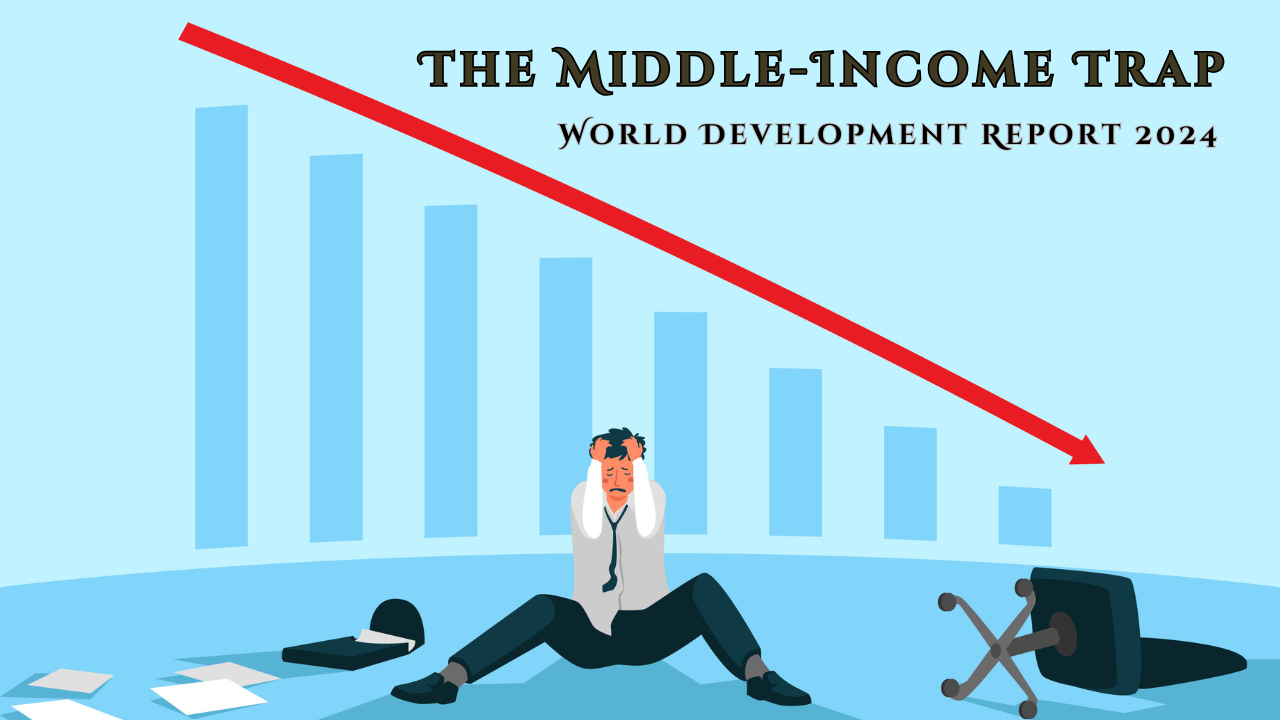Font size:
Print
The Middle-Income Trap
Context:
The World Development Report 2024, authored by the World Bank, highlights a critical challenge facing many economies i.e. the “middle-income trap.”
More on News:
- The report outlines essential policies and strategies for escaping the middle-income trap, focusing on the “3I” approach: Investment, Infusion (of global technologies) and Innovation.
- Countries must prioritise investments, adopt global technologies, and foster an environment conducive to domestic innovation.

Middle-Income Trap Overview:
- The middle-income trap occurs when a country experiences a slowdown in growth after reaching middle-income status, often due to structural inefficiencies and an inability to innovate.
- This phenomenon refers to the stagnation of growth rates as countries transition from middle-income to high-income status, particularly when their per capita income reaches about 11% of the U.S.
- The World Bank’s analysis reveals that over the past 34 years, only 34 middle-income economies (with per capita incomes between $1,136 and $13,845) have moved to higher income levels.
- Economic indicators such as GDP per capita, productivity rates, and investment levels are crucial in assessing whether a nation is trapped or on the path to advancement.
Case Studies
|
Current Challenges for India:
- Structural Issues: India faces unique challenges in escaping the middle-income trap, including:
- Increased influence of billionaires who are perceived to be close to the state.
- A stagnating manufacturing sector and a reversal in structural transformation, with more employment returning to low-productive agricultural jobs post-pandemic.
- Economic Disparity: Despite reported real GDP growth of around 7%, real wages have not kept pace with inflation, leading to stagnant purchasing power for workers.
- The Democratic Dilemma: The successful export strategies of South Korea and Chile were implemented under authoritarian regimes that suppressed labour unions and dissent.
- This raises a crucial point: while state intervention is necessary for growth, it must not come at the cost of democratic principles.
Recommendations:
- Governments in middle-income countries must develop competition policies that support a balance among large corporations and startups.
- Focus on the value companies bring to the economy rather than their size.
- Encourage upward mobility for citizens rather than adopting zero-sum policies aimed at reducing income inequality.
Conclusion:
The insights from the World Development Report 2024 underscore the complexity of breaking the middle-income trap. India, with its unique challenges and opportunities, must adopt lessons from successful economies while navigating its path in a democratic framework.
Subscribe to our Youtube Channel for more Valuable Content – TheStudyias
Download the App to Subscribe to our Courses – Thestudyias
The Source’s Authority and Ownership of the Article is Claimed By THE STUDY IAS BY MANIKANT SINGH





